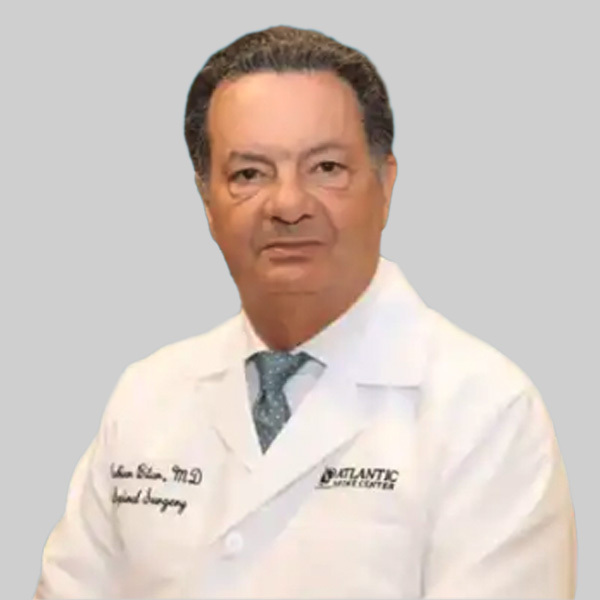Pain management physicians use conservative methods to treat symptoms of chronic or acute pain. Musculoskeletal and neuromuscular conditions or injuries can cause an onset of pain that may range in type and severity. Pain management allows patients to function comfortably whether or not their causal condition is permanent. Pain may be categorized in two ways:
- Acute Pain – This type of pain is sudden and is the result of a specific event, such as an injury or surgery. It is usually accompanied by inflammation and loss of mobility, though temporary. Acute pain can be treated for a certain amount of time, and will fade when the underlying problem is corrected, such as when an injury heals or muscles and ligaments are re-strengthened and inflammation subsides following trauma.
- Chronic Pain – This type of pain is persistent and caused by a chronic disease. These diseases are not easily curable and are sometimes irreversible. Chronic pain lasts for long periods of time and must be continuously managed. This type of pain is most often the result of conditions such as arthritis. A number of therapies are used on a routine basis to prevent the pain and allow a patient to function despite their permanent condition.
DIAGNOSIS
Before pain management treatments may begin, a physician must evaluate and diagnose the exact source of a patient’s ailments. There are a variety of underlying issues that can cause symptoms to arise, so a doctor must be sure of the problem before it can be remedied.
A physician will first ask questions of the patient directly involving past injuries, previous conditions, lifestyle habits, and the type of pain felt, such as burning, stabbing, dull, or aching sensations. After this background knowledge is acquired, a more certain diagnostic test is usually necessary. A number of tests may be used depending on the type of pain a patient experiences.
- Physical Examination: A specialist may often be able to locate problem areas by asking a patient to perform a task or manually feeling the trouble area. A doctor is usually able to feel trigger points in muscles or dislocations.
- Imaging: Magnetic Resonance Imaging (MRI) is the most common type of imaging used to diagnose musculoskeletal issues and tissue damage. Magnetic waves create an image of the skeletal system and the muscles, tendons, cartilage, and ligaments attached to it, allowing a doctor to locate damage to bone and tissue such as fractures, diseased tissues, or structural abnormalities.
- X-Rays: X-rays are radio frequency images that display the skeletal structure alone. This is useful in diagnosing fracture, trauma injuries, or other skeletal deformities like bone spurs or grinding joints.
- Electrodiagnostic Testing (EMG & Nerve Conduction Studies): EMG and NCS tests are done to record the electrical activity produced by the nervous system. A specialist is able to read a series of graphs that record the electrical pulses and recognize areas of nerve dysfunction. These tests allow the doctor to locate which nerves are the cause of the abnormalities. This is highly effective in diagnosing neuromuscular conditions and pinpointing what areas must be treated.
TREATMENTS
The physicians at NY Bone and Joint Specialists offer a wide range of possible treatment options to manage both acute and chronic pain. After an evaluation, a doctor can recommend the most appropriate treatment plan to rehabilitate the body and restore a patient’s lifestyle.
Our team of physicians will allow the body to heal with the most conservative methods whenever possible, to promote long-lasting pain relief with the least amount of side effects. This can most often be done with a physical therapy routine. Medication may also be prescribed to make physical therapy sessions more effective and make the patient as comfortable as possible without adverse side effects.
PHYSICAL THERAPY
One of our physical therapists will build an individualized routine of modalities, stretches, and exercises that will gradually rehabilitate a targeted area. A physical therapy session will usually start with modalities, such as ice or heat applied to the pained area, in order to control pain and make the following activities easier to perform.
Once any swelling or soreness has subsided, a type of manual therapy or massage may be used to relax and manipulate tissues. Stretching will increase the flexibility of these tissues, restoring the body part’s range of motion. Strengthening takes place last, increasing blood flow to muscles and slowly building their endurance for activities that could trigger pain.
MEDICATIONS
There are multiple medications that a physician may prescribe to manage pain, making a patient more comfortable, allow them to perform rehabilitating activity, or manage pain until an injury has healed. These medications may have adverse side effects and are prescribed sparingly. Despite this, they are often helpful in returning a patient to their daily lifestyle and speeding the healing process.
- Anti-Inflammatories: These drugs consist of ibuprofen or aspirin, which reduce swelling, provide pain relief and increase mobility.
- Corticosteroids: These are steroid induced anti-inflammatory drugs that are given in very controlled doses manually to a targeted area, providing pain relief for long periods of time.
- Muscle Relaxants: Small doses of muscle relaxants will ease muscle spasms, which often cause acute pain and prohibit a patient from performing simple tasks or exercises.
- Pain Relievers: Pain relief drugs are usually given in single prescriptions to ease a patient’s pain directly after injury or surgery. By alleviating pain, a patient is better able to rest and heal.
INJECTIONS
There are many different types of injections and pain management procedures available at NY Bone and Joint Specialists when more conservative treatment fails. These include the following:
- Interventional Pain Management: A subspecialty of pain management, in which more advanced techniques and injections are used to treat and diagnose chronic pain conditions when other methods fail. These include such procedures as Epidural Steroid Injections, Facet Joint Injections and Nerve Blocks.
- Prolotherapy: Prolotherapy is a type of corrective therapy. It aims to draw fibroblasts to an area of damaged tissue or cartilage so the body may natural regrow cells and heal itself. This may be accomplished in anywhere from 3-10 sessions or more regularly for chronic conditions.
- Sacroiliac Joint Injection: A corticosteroid injection to the hip joints, which cause lower back and hip pain when irritated and inflamed.
- Viscosupplementation Injection: A synthetic lubricant is injected into joints suffering from arthritis or osteoarthritis, which lose their natural synovial fluid, causing the bones to grind together more and inflame the area.
- Tendinitis Injection: Corticosteroids are injected into the region where tendons are irritated from tendinitis, reducing inflammation and relieving pain enough to correct the problem with physical therapy or simply alleviate pain for several months.
- Traumeel Injection Therapy
- Platelet-Rich Plasma (PRP) Therapy (PRP Injections)
_________________________________
EXPERIENCING PAIN? DO YOU HAVE AN INJURY?
Our Specialists are here to help.
Book an appointment with NYC’s best orthopedic specialists to discuss your condition. Fill out the form below and you will receive a call from our office within 5-10 minutes. We’ll book an appointment at a time and location that work for you, and send you a reminder by email.










